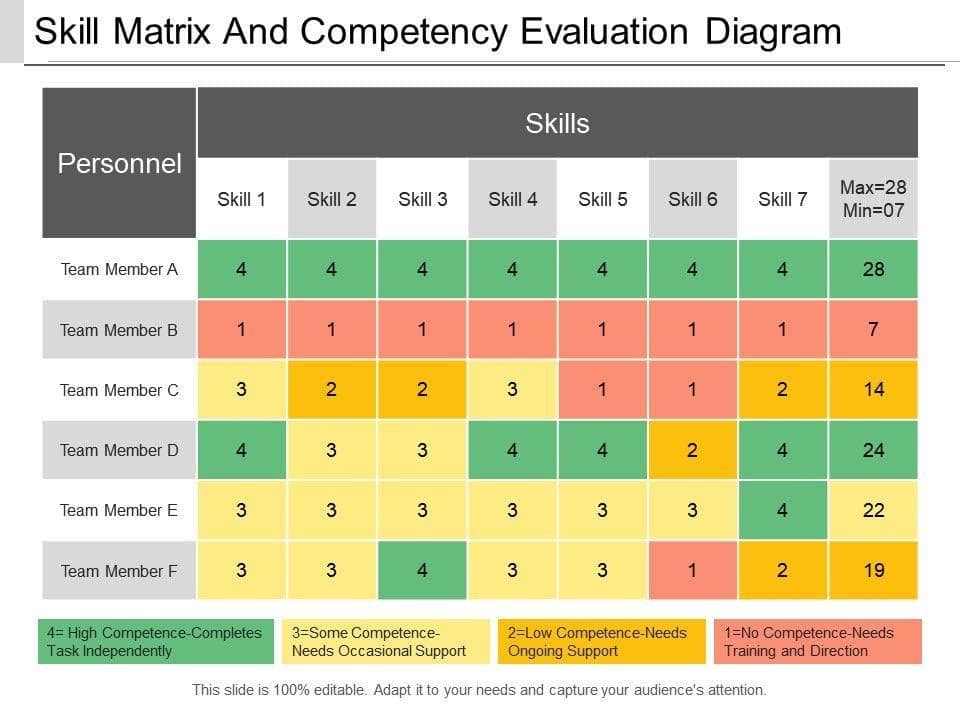Do you believe that a good salesperson is born ready for the job?
It is true that a fair dose of talent is a contributing factor, but even the most experienced salespeople need to develop skills and behaviors in sales training to achieve better results in their careers.
Sales training is an initiative that aims to improve the team’s skills and meet business objectives.
But for training to fulfill its function, the activities need to be well designed and overcome the challenges that may appear along the way, such as resistance from the sales team and limitations in the budget.
Now, let’s take a closer look at what sales training is and how to implement it in your business to ensure your team’s development.
Keep reading to find out!
What Is Sales Training?
Sales training is a qualification action that aims to improve techniques or behaviors in a company’s sales team.
Training must be part of the company’s routine, from onboarding employees to periodic sessions.
The objective is to train the sales force for:
- Different stages of the sales process.
- New tools and methodologies.
- The company’s culture.
- Or a specific action.
This objective must be in line with the organization’s goals so that the salespeople can boost the business results.
The company managers and sales managers must be aware of the team’s learning needs, both on the technical and behavioral levels.
Training can target skills in relation to tools and methodologies, but also help develop attitudinal skills such as confidence, focus, and resilience.
Why Invest In Sales Training?
Sales training should always be regarded as an investment by the company, not an expense.
Some managers may think that training will cost too much money or require a lot of resources, but they don’t consider the return it can deliver.
First of all, think in terms of the individual.
➜ Employee training is, first and foremost, a learning process.
Every salesperson experiences personal growth after attending sales training, whether on a technical or behavioral level.
Personal development is for life.
Salespeople can obtain better individual results in the company, gain new career possibilities, and even improve their personal relationships.
Therefore, it is a benefit that you deliver to each employee.
➜ In this context, the sales team as a whole becomes more satisfied and motivated at work. And, as a result, they tend to show greater productivity.
From this, you can already understand the importance of sales training for your business.
Motivation and job satisfaction tend to increase talent retention and strengthen employer branding, which refers to shaping your brand’s image among your employees.
➜ In addition, corporative training targets skills and behaviors that have the potential to improve sales results.
This helps with the optimization of processes and elimination of loopholes that may be hindering your results.
Keep in mind that sales is one of the most critical areas of your business.
The company’s operations and growth depend on the revenue that sales generate. Moreover, it is the frontline department.
➜ Salespeople are directly in contact with customers and can directly influence their perceptions of your brand.
So it deserves careful attention in business management. And for this reason, sales training is a strategic action.
With a more skilled, motivated team, the sales results tend to improve at a faster pace.
Thus, this investment — that maybe you thought was just an expense — pays off in customer acquisition and business revenue.
How To Create a Sales Training Program? 8 Steps To Train Your Team
Now let’s get down to practice!
Here’s a step-by-step approach to creating effective sales training for your business:
1. Identify the needs within the sales team
Conducting sales training must be based on a reason, and this reason arises from identifying the learning needs of your sales team.
To do so, analyze the data from the sales process and the team’s performance.
There may be bottlenecks when negotiating with customers or closing sales, for example.
Maybe the salespeople need to master a new tool that the company has acquired. If this is the case, the training process can focus on it.
In the chart below, you will see an example of a competency matrix, which you can use to assess the strengths and weaknesses of your team, both individually and as a group.

Often, asking salespeople directly about what they want to learn can also work.
You can make an anonymous survey, for example.
And remember: data is very helpful, but you need to constantly have a sensitive look at your sales team.
It is important to understand pains, doubts, and behaviors that are not always evident and can be affecting team satisfaction and productivity.
2. Understand the profile of your sales team
Managing sales teams is also about understanding your salespeople’s profile.
In addition to identifying learning needs, you need to know how your team behaves:
- Their motivations.
- Their day-to-day difficulties.
- Their primary sources of information.
This way, you can plan a training program that makes sense to people and stimulates their participation and engagement.
The ideal is to create a persona for your training — just like you did for your Marketing strategies.
One of the essential factors when analyzing the profile of salespeople is to understand that they are adults.
It may seem obvious, but adult learning is quite different from that of children and teenagers.
They are self-directed, goal-oriented, have no time to lose, and already carry some knowledge, experience, and strong opinions.
So, you have to deal with these characteristics.
3. Define the objectives of the sales training
After identifying the needs and creating the persona, define the goals of your sales training.
The objective must play a role in the sales planning and help you achieve your overall business goals.
Some common training objectives are:
- Reduce the sales cycle.
- Increase the conversion rate.
- Reduce the churn rate.
Besides defining general objectives, establish measurable goals, deadlines, and indicators to assess the operation’s success.
This way, you will know if you have succeeded in reaching the goal.
4. Define the training format
There are several options for sales training formats, including:
- Face-to-face courses, inside or outside the company.
- On-site lectures.
- Live online courses, with team interactions.
- Recorded online courses.
- Webinars.
- Mixed course (classes and lectures, in-person and online, live and recorded, etc.).
- Group dynamics.
The choice will depend on some factors, such as the sales team’s profile, size, budget, and available time.
Depending on these factors, you can choose from a one-week training in a resort to an online course with tutorials.
Also, keep in mind that each course model generates a different level of engagement.
A face-to-face course, for example, tends to be more motivating and helps participants memorize the content.
An online training course with recorded lessons, on the other hand, is cheaper and reaches more people, although it may not generate as much engagement.
5. Define who the trainers are
It is common to invite trainers or in-company training providers to give courses or lectures.
They bring experience and market vision from outside the company, which is vital to eliminate any bad habits of the internal team.
However, it is interesting to invite employees from the company itself to train the team.
You can choose the most experienced salespeople to talk about their most successful techniques, for example.
Or maybe the Sales Ops professionals, to explain a new sales process.
It could also be the Marketing team talking about social media strategies.
In this way, you can integrate the company’s team, acknowledge your employees’ expertise, and motivate them.
6. Develop the learning materials
After thinking about the format of the sales training, develop the learning materials.
These can include presentations, videos, audios, books or ebooks, workbooks, and other supplementary resources.
Often, the speakers or trainers will be responsible for the presentation and some of the materials.
Whether from inside or outside the company, it is important to align the content with the training objectives and learning needs, so that participants easily understand it.
7. Implement the activities
There you go: you have already planned your sales training and have defined the main points.
Now it is time to implement your plan.
One of the main actions in this stage is to spread the word about the training program.
Do this in advance, so that salespeople can arrange their schedules and finish their activities on time.
Use the company’s official communication channels to avoid misinformation. Depending on the training format, you need to take a series of steps.
↳ If it’s face-to-face, you may need to rent a room, equipment, and buy supplies for the coffee break, for example.
↳ If it is online, you need to have a streaming platform and test your microphones and cameras.
To implement sales training, you may need the help of a Learning Management System (LMS).
It allows you to manage training, publish content, generate reports, inform participants, and automate several actions.
Through a single login, salespeople can access classes and materials, perform exercises, receive announcements, and control their training schedule.
Thus, the student’s learning process and the company’s training management become more organized and efficient.
8. Evaluate and optimize sales training
After implementing the activities, evaluate the sales training results.
Right at the end of the course, you can do a participant satisfaction survey, so that they evaluate the classes, the instructors, the duration of the training, among other factors.
According to LinkedIn, although it is growing, the number of professionals who use employee surveys to request feedback on training is still low:

Source: 2021 Workplace Learning Report
Another tip is to keep an eye on the medium and long-term results.
For example, if you intended to decrease the sales duration time, keep track of this performance indicator among the salespeople who participated in the training.
Then, according to the feedback from the participants and the analysis of the results, you can make adjustments in the subsequent training sessions to ensure they meet the proposed objectives.
What Are The Main Challenges Of Conducting An Effective Sales Training?
Creating sales training is not just about broadcasting a lecture over the Internet.
As you have learned, there are several steps to make this action happen in a strategic way that meets business objectives.
However, along the way, some challenges and obstacles may appear.
Let’s see now which are the main ones and how you can overcome them:
Staff resistance
At its core, learning is a process of change.
You go from the point of ignorance to knowledge that can transform everyday actions.
The problem is that many people don’t want this change.
You may have heard phrases like “I have always done it this way, and it has always worked” or “the way I do it is better”.
Those who say this are usually demonstrating resistance to learning new things.
In sales training, many salespeople prefer to keep the techniques they use and the behaviors they have already developed. Change takes work.
To get around this obstacle, the company must know how to communicate the importance of training, the objective it must meet, and the gains it can bring to the salesperson.
In addition, it is crucial to identify the real needs of the team so that they realize how relevant the training is to their lives.
Limited budget
The budget for sales training is one of the major limiting factors.
Often there is no dedicated budget, and when there is, it is too small.
So, first, you have to understand that sales training is an investment, not an expense.
With good planning, you can identify the potential return of this sales investment for the business.
This makes it easier to convince managers to invest in this activity.
You can also find cheaper training formats. Online and recorded courses tend to be cheaper than live or in-person ones.
Of course, you need to evaluate whether these formats meet the training objective, but they are possibilities that you should consider.
Geographical barriers
Often the sales team is not concentrated in one city or region.
In the digital transformation scenario, working from home is increasingly common.
But bringing all employees together in one place can be very expensive…
So if you want to offer the same training to the whole team, you have to think about online courses, webinars, and digital materials.
In addition, you need to consider cultural differences.
Representatives may be spread across different regions of the country or even different countries with different customs, behaviors, languages, and time zones.
Always consider the geographical and cultural elements when planning sales training.
Trainer alignment
Trainers from outside the company may bring an exciting vision of the market, but they don’t know the business and sales department’s reality.
For this reason, some training sessions become inefficient because the salespeople cannot apply what they have learned in their daily routine.
So look for professionals who are aligned with the mission and values of your company.
It is also beneficial if they already have experience with the niche and audience of your business, and that they are well introduced to the company’s reality and its main difficulties.
What Competencies Are Essential For Every Salesperson?
Finally, let’s look at the key competencies that a salesperson needs to develop in order to be successful in their field.
The sales training you create can target these skills!
To analyze what they are, we use the concept of KSA (Knowledge, Skills, and Attitudes), which summarizes the set of human competencies.
So, let’s see which competencies are necessary for a successful salesperson:
Knowledge
Knowledge leads to wisdom. It is the theoretical repertoire that every salesperson brings to their work.
In sales, it is important to have knowledge of the:
- Business.
- Client.
- Market.
- Sales methods.
Skills
Skill is knowing how to do something. It is when knowledge is transformed into practice on a daily basis.
For a successful salesperson, these are the main skills:
- Negotiation.
- Planning.
- Defining priorities.
- Organizing routines.
- Listening.
- Communication.
Attitudes
Attitude is the will to do something. It’s the behavior that mobilizes people to apply their knowledge and skills.
The major attitudes of a good salesperson are:
- Focusing on results.
- Having empathy.
- Having initiative.
- Being optimistic.
- Being persistent.
- Having the humility to learn continuously.
Well, now you know the importance of effective sales training for your business.
It is time to leave behind those sales techniques that only want to push solutions using empty rhetoric.
Every salesperson needs to understand how to offer value to their customers and develop skills that help in this process.
For this reason, you must plan your company’s sales training sessions well in order to stimulate the skills and behaviors that will enhance the salespeople’s work.
The results will appear through the growth of each employee and in the company’s sales metrics.
It is no longer a secret that sales results also depend on the performance of the Marketing team, but how can you make both departments work together?








